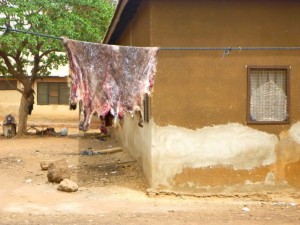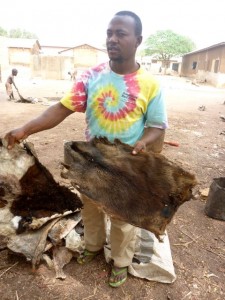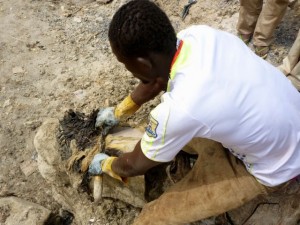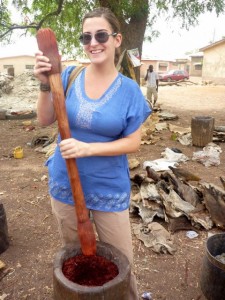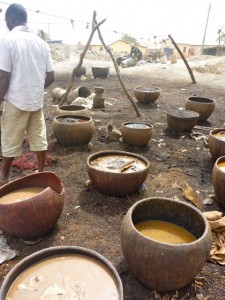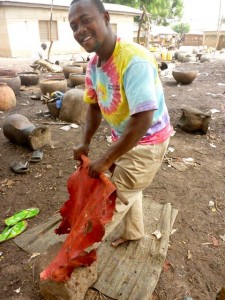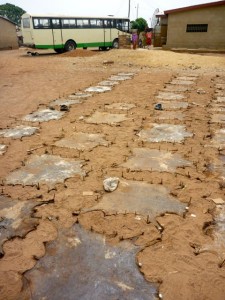The next morning we said goodbye to our friend Amy T. The two of us that remained decided that we would continue our northerly trek, heading to Tamale and Mole National Park. After three hours spent stuffed in the back of an over sized and packed-to-the-max tro-tro, we arrived in Tamale. The capital of the northern region of Ghana, Tamale is a small but energetic town. Because of the flatness of the terrain, there are an insane amount of bicycles and motor bikes. You should see the women riding on their motor bikes with their baby strapped to their backs, it’s quite a sight! We spent our first evening in Tamale packed into a tiny room in an upstairs bar, watching Ghana lose in the semi-finals of the African Cup.
The next morning, we journeyed to a place in town where leather is processed. The northern regions of Ghana are particularly known for their leather works, so I was pretty excited to see how it all happens. The men were very happy to show us around and allow us to take pictures, for a small fee. Our taxi driver even went with us, he was interested as well. As they explained the complicated process, I was struck by the ingenuity of it all. The fact that somebody once looked at a goat running around and said “hey, his skin would make a pretty sweet hand bag” – and then uncovered this entire process, it’s pretty incredible. It also brought home the fact that yes, our beautiful leather goods are actually made out of animals. Just like we forget that McNuggets are made out of cute little chicks, I think we can easily forget that our belt is made out of the skin of a cow. It would be impossible for me to explain the entire process that they use, but to see it all was really informative and eye opening.
When the skin is removed from the animal, it is left to dry in the sun for some time. It then becomes hard, and it looks like one of those animal skin rugs. After that, it is soaked in water a number of times and rubbed with a blade to remove the hair and the fat. It then goes through another process of soaking, drying and stretching to give it the preferred texture and color. What is most interesting to me is that they use things from nature to color the leather. They pound up things like plants to make a dust, add water to that dust and then soak the leather in the now colored water. It’s all very cool!
After the leather is finished, leather workers can purchase in bulk and then use it to create things like shoes, belts, bags, rugs and so on. After our tour we were introduced to a man named Mr. Slim, who is not only a skilled leather worker but a local chief of the Zongo people. From him you could custom order almost anything you want, either using the pictures of things he has already made or by describing a design to him. My friend ordered a pair of shoes, I ordered a bag. He can ship anywhere in Ghana using the parcel services along the bus routes. His prices were amazingly reasonable, I ordered a rather intricately designed leather bag for 40 Cedes (about 25 USD). Pictures of the bag to come!
